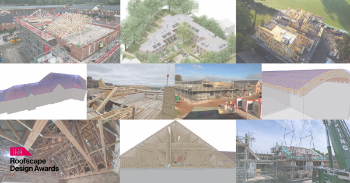Priced bill of quantities
A bill of quantities is a document prepared by the client's cost consultant that provides measured quantities of the items of work necessary to construct a development. These items of work are described by the drawings and specifications in the tender documentation. The quantities may be measured in number, length, area, volume, weight or time.
An unpriced bill of quantities (sometimes referred to as the tender pricing document) is issued to tenderers, who will then estimate their price for each item. This priced bill of quantities constitutes the tenderer's complete offer. It is the unpriced bill of quantities, but with the tenderer’s rates, costs and totals added.
The preparation, by the client’s consultants, of an unpriced bill of quantities assists tenderers in the calculation of construction costs for their tender, and, as it means all tendering contractors will be pricing the same quantities (rather than taking-off quantities from the drawings and specifications themselves), it provides a fair and accurate system for tendering. It also makes it possible to compare both the overall price and individual items directly with other tenderers’ offers, allowing a detailed assessment of which aspects of a tender may offer good or poor value. This information can assist with tender negotiations.
The priced bill of quantities will also:
- Assist with the agreement of the contract sum with the successful tenderer.
- Provide a schedule of rates assisting with the valuation of variations.
- Provide a basis for the valuation of interim payments.
- Provide a basis for the preparation of the final account.
It is very important that bills of quantities are prepared according to a standard, widely recognised methodology. This helps avoid any ambiguities or misunderstandings and so helps avoid disputes arising through different interpretations of what has been priced. In the UK, bills of quantities for general construction works will most commonly be prepared in accordance with the Standard Method of Measurement 7th Edition (SMM7) or the New Rules of Measurement, which became operative on 1 January 2013 and replaced SMM7 on 1st July 2013.
Bills of quantities are most useful to the contractor when they are prepared in work sections that reflect likely sub-contract packages. This makes it easier for the contractor to obtain prices from sub-contractors and is more likely to result in an accurate and competitive price.
[edit] Related articles on Designing Buildings Wiki
- Bill of quantities.
- Common arrangement of work sections.
- Common mistakes in bill of quantities.
- Comparison of SMM7 with NRM2.
- New Rules of Measurement.
- Schedule of rates.
- Schedule of work.
- Standard Method of Measurement.
- Tender documentation.
- Tender pricing document.
- Types of bill of quantities.
- Unpriced bill.
Featured articles and news
Moisture, fire safety and emerging trends in living walls
How wet is your wall?
Current policy explained and newly published consultation by the UK and Welsh Governments.
British architecture 1919–39. Book review.
Conservation of listed prefabs in Moseley.
Energy industry calls for urgent reform.
Heritage staff wellbeing at work survey.
A five minute introduction.
50th Golden anniversary ECA Edmundson apprentice award
Showcasing the very best electrotechnical and engineering services for half a century.
Welsh government consults on HRBs and reg changes
Seeking feedback on a new regulatory regime and a broad range of issues.
CIOB Client Guide (2nd edition) March 2025
Free download covering statutory dutyholder roles under the Building Safety Act and much more.
AI and automation in 3D modelling and spatial design
Can almost half of design development tasks be automated?
Minister quizzed, as responsibility transfers to MHCLG and BSR publishes new building control guidance.
UK environmental regulations reform 2025
Amid wider new approaches to ensure regulators and regulation support growth.
The maintenance challenge of tenements.
BSRIA Statutory Compliance Inspection Checklist
BG80/2025 now significantly updated to include requirements related to important changes in legislation.
Shortlist for the 2025 Roofscape Design Awards
Talent and innovation showcase announcement from the trussed rafter industry.






















